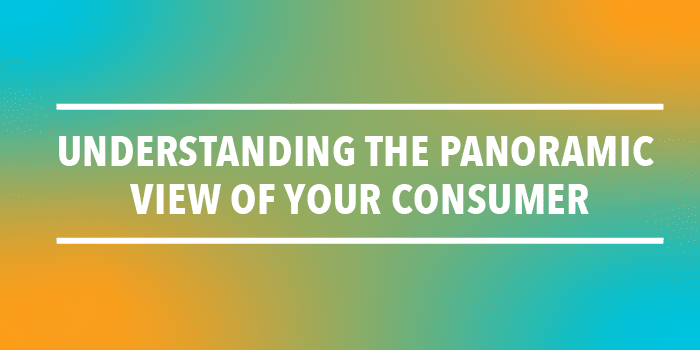
What if you could see what you’ve been missing about your customers? You may have first-party data on your users, which can tell you what pages they visit on your site and other information they’ve given you directly. However, even with the vastest collection of first-party data, you only get a narrow view of your customers behaviors and interests. What do your customers do outside your sites and apps? What content do they consume? What interests do they have? What do they eat, where do they shop, how do they work their worlds, etc.?
The answers lie in a panoramic approach to understanding your customers. Seeing your customers from every angle helps you develop deeper and more meaningful relationships. It helps you evaluate the success of past marketing campaigns and messaging. It also allows you to build more accurate personas and target customers with precision. So, what is the panoramic view of the consumer, and how can you access it? It comes down to enriching your data with robust sources of high-quality, curated data and powerful tools to provide the insights you need.
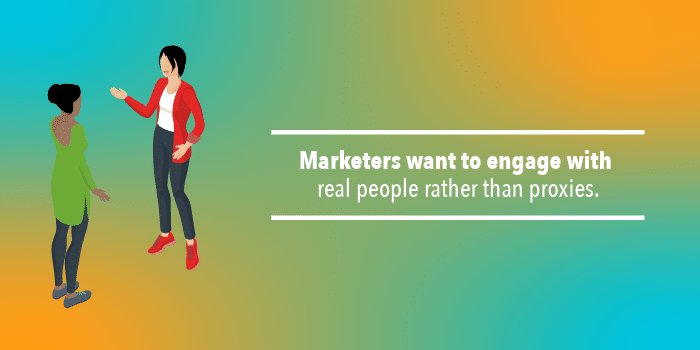
The Current State of the Problem for Marketers, Agencies and Publishers
Traditionally, marketers have used third-party cookies to collect data and understand the behaviors of their audiences. Now, more than ever, marketers want to engage with real people rather than proxies. Marketers need a way to recognize their site visitors no matter what platform they are on, and which device they are using.
Marketers often don’t integrate searches on different browsers or different devices. As a result, they have trouble attributing the success of their campaigns. If a user sees an ad on their mobile device and then buys a product on their computer, they have no way of knowing the ad was successful because it’s traditionally tracked by third-party cookies. It can also negatively impact the user experience.
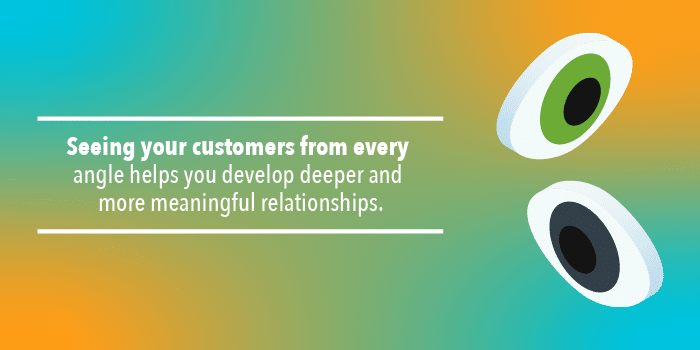
For publishers, readers who access their sites on multiple devices may end up seeing content suggestions for articles that do not interest them or ones they’ve already seen because of the lack of a wider view of the site visitor. The shortage of high-quality, reliable data makes it harder to sell targeted ads.
While these problems with third-party cookies have always been present, the usual people-based marketing techniques are becoming more challenging to activate with cookie tracking. Privacy regulations, such as the European Union’s General Data Protection Regulation (GDPR), limit how companies can collect and store data. Because of these rules, many sites now give users the option to reject cookie tracking used for marketing purposes. Google has been making headlines for the last several years with their anticipated phasing out of third-party cookies in Chrome browsers. Google Chrome, Safari and Firefox are blocking cookies, and savvy internet users are clearing their cookies from their devices and browsers.
CONTACT US TO LEARN ABOUT cookieless SOLUTIONS
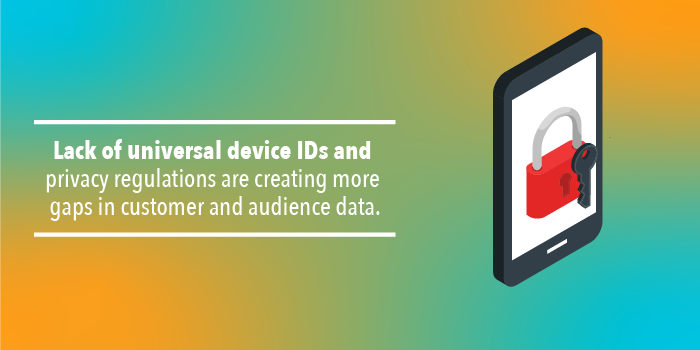
The current marketing landscape has increased the importance of first-party data. While marketers have many ways to collect valuable first-party data outside of third-party cookies — including surveys, panels, and offline data — it’s limited in scope. For some, first-party data might include only an email address. Even detailed data can become outdated quickly. People often move to new addresses, get married and change income levels. Your audience is ever-changing. The data you collected a few months ago might already be outdated. And, first-party data only reveals behaviors and attributes within the confines of your properties. What about everywhere else that consumer goes — what they watch, buy, read, and listen to? First-party data alone cannot paint a complete picture of your current audience.
Cookie blocking, a lack of universal device IDs, and privacy regulations are creating more gaps in customer and audience data. Marketers and agencies are missing touchpoints they can’t see and ones they can’t execute on. Because of this, marketers are losing the opportunity to build lasting customer relationships. Publishers are forgoing monetization opportunities and accurate audience-advertiser matches. Marketers and agencies need a new way of collecting, enriching and visualizing data to expand their view of customers and create addressable audiences they can execute on.
What Is Data Enrichment?
If marketers exclusively use first-party data to understand their customers, they only get part of the picture. What’s worse, it’s nearly impossible to know what they cannot see. They risk missing out on sales from their current customers and prospects. Competitors who have access to those blind spots can swoop in and take advantage.
The answer marketers are looking for lies in data enrichment, which is the process of merging reliable second- and third-party data with your first-party customer data. By doing this, you can transform your raw data into meaningful insights with more and higher-quality information at your disposal. You can uncover trends while also revealing richer insights into your customers’ lives. Data enrichment allows you to tie discrete data pieces together to create a composite of each customer. You can then identify website visitors on an individual level for enhanced targeting.
To understand how data enrichment works, let’s look at an example. Imagine you’re marketing an auto dealership. You have a list of emails gathered from a piece of gated content on your website about how to buy a car. These emails probably tell you very little about your consumers. You could craft and send out a mass email to each contact on your list. From there, some messages will bounce back, and others never receive a response. Some who reply might live outside the range of your business.
CONTACT US TO LEARN ABOUT DATA ENRICHMENT SOLUTIONS
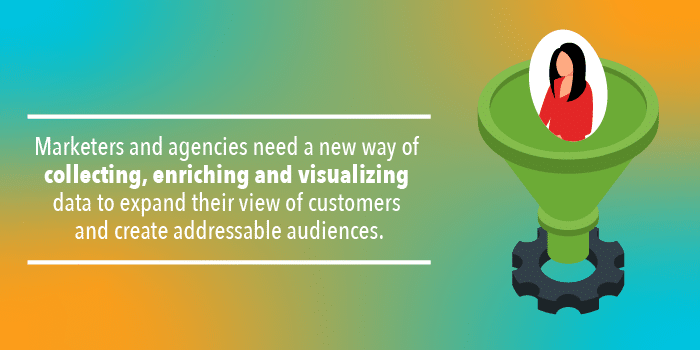
What happens if you enrich this data with customers’ viewing, search and purchasing histories from these users across the web? Now you can see what kinds of vehicles these users are interested in. Are they trying to buy a used car? Have they invested in a lease in the last several years? Is their viewing history full of fancy sports cars? You can infer what they can afford based on their purchasing history and see what other car dealership websites they’ve visited. You can now qualify individuals and focus your efforts on the ones most likely to buy a car from your dealership. You can personalize emails and targeted ads to show cars in their preferred make, model, and price range. To those who might also be looking to trade in a used car, you can target messages about trade-ins.
How Can Data Enrichment Help?
The applications of data enrichment are endless. Here are some of the top ways enriched data can help you.
- Build robust audience segmentation: The more data you have, the more defined your segmentation becomes. By categorizing individuals who have more things in common, your targeted campaigns become more effective. With more sources of data, you can reveal new patterns among your customers, powering better actionable insights. You’ll be able to segment in ways that would have been inaccessible otherwise.
- Inform your personas: Building a panoramic view of the customer can give you a complete picture of your consumers, allowing you to uncover patterns and build more detailed profiles. You can fill in information about likes, dislikes, attributes, locations, and content preferences to develop addressable personas to build better customer relationships. Validate the personas you’ve already created and uncover new ones to target.
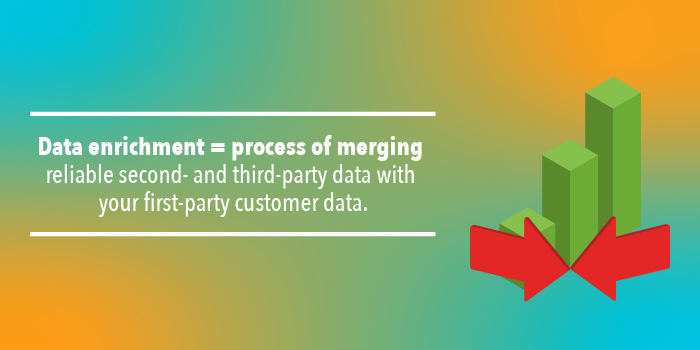
- Discover new prospects: Based on the data you have on your current customers and audience members, you can find information on people who share similar characteristics, interests, and behaviors. You can increase the number of people you target with personalized messages and uncover new leads.
- Personalize the audience experience: These days, audiences demand more personalization from targeting efforts. Creating personal touch points goes beyond addressing customers by their first names. Enhanced personalization can suggest products based on a user’s search history and interests. Enriched data can reveal this information and inform your marketing tools to push personalized content to each audience member.
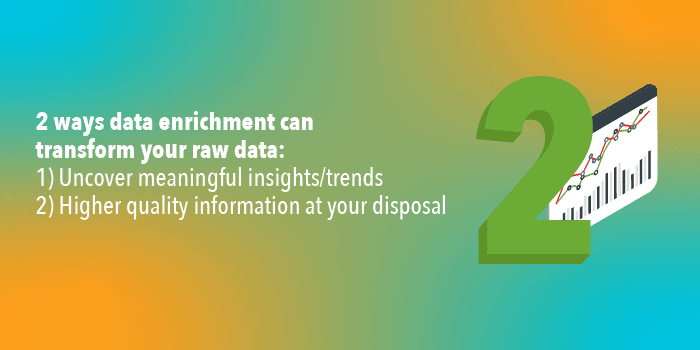
- Qualify leads automatically: Scoring leads can often be guesswork at best. For example, lead scoring for a B2B marketer might disqualify a personal email, since it’s not connected to any business. Enriched data can inform an automated lead scoring system by linking a personal email address to a business address, revealing a well-qualified lead.
get started with DATA ENRICHMENT SOLUTIONS
How Can You Make Sense of All This?
Data enrichment is critical to building relationships with your customers in a more meaningful way. It enhances your insights, so you can create better customer segments and addressable personas, find and target more people and create a more satisfying customer relationship. How can you enrich your first-party data and combine it with third-party data so your team can understand and harness the information? The secret is with the right data tools, marketing technology, and an identity solution, it can provide rich insights and aggregate first-party data alongside other data sources.
As more devices and browsers block third-party cookies altogether, and users reject and remove them manually, your marketing needs tools to work a cookie-challenged world. If the user spends 30% of their time in a browser that doesn’t support cookies, you lose 30% of that consumer’s behavior, intent, and attribute data. Those touch points remain invisible.
An identity solution can stitch together offline data, online data from multiple browsers and devices, mobile apps and connected smart TVs and information from your customer relationship management (CRM) tool. Combining all this data gives you an enriched view of your audience to inform personas and segmentation so your marketing efforts can be more impactful. You can identify users across all devices, platforms, channels, and contexts. Using people-based marketing means you can recognize a user when they visit your site on a laptop and come back later on a phone. You can more easily target users across all channels, no matter the device or browser they are using.
People-based marketing unifies your targeting strategy and enhances user experience. You’ll be less likely to annoy customers by sending them irrelevant content on multiple devices. You can also access reliable information about each individual’s customer journey. An identity solution gives you a full picture of the consumer, no matter where they are online. You can compile data from each platform, browser and device a user accesses to create a composite of that person — a panorama. Once you can see the entire panorama, you can target more audiences and create more personalized experiences.
StART PEOPLE-BASED MARKETING TODAY
The Value of Having a Panoramic View of the Customer
With data enrichment and a robust insights tool, you can see what you’ve been missing and develop a panoramic view of the customer. A panoramic view of the customer gives you a complete history of every interaction a person has with your brand, and can even forecast how an individual may interact with your brand. It also shows you who your customers are outside of your properties, allowing you to fill in the gaps in your knowledge about who your customers are. You can see what they like, what sites they visit, what they stream on their CTV device, what they buy and so much more. You can use this data to build more comprehensive personas and personalized ads. You can also power your identity resolution for people-based marketing.
Without panoramic data about the customer, your analytics might say you had one new profile visit on your social media account. Then, an unrelated site visitor interacts with your content without making a purchase. The next day, another site visitor converts on a mobile phone. Your analytics won’t even pick up one of the customer’s stopping points on their journey, where they looked at independent reviews from around the web. With an identity solution, you suddenly see the meandering path to converting a single, highly engaged customer and the benefit of people-based marketing.
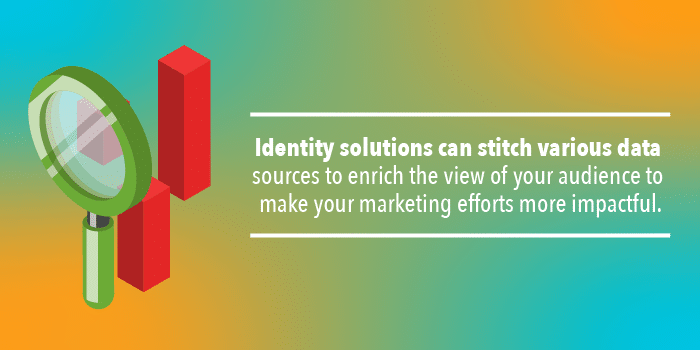
A panoramic view maps out the buyer’s journey for any customer who uses your website. You can use this to analyze trends among your customers and even predict how other customers will interact with your brand to enhance your targeting. As a marketer, you unlock more data about your customers, making targeted ad campaigns more personalized and convincing. You also strengthen the capabilities of your programmatic advertising. As an agency, you can develop relevant personas to focus your targeting efforts.
How Can You Get Started?
Getting started with data enrichment starts with first-party data. Although you can gain a lot of crucial insights from third-party data, you need at least one piece of shared information to tie your company’s data to other sources. With more than one commonality, you can unify data points and attribute them to individual identities with more confidence. So, this process necessarily starts with internal data collection.
Your sales, customer service, and marketing teams should each be responsible for collecting and sharing data about customers with the entire company. A CRM tool is a fantastic solution that allows everyone to share the most recent customer information across departments. The more robust the data you can aggregate within your CRM tool, the more scale you can add with second-party data collaboration or third-party data. You can also collect data through Google Analytics.
CONTACT US TO get started with data enrichment
Next, you’ll migrate all the first-party data you have available into a suite of data enrichment tools. This tool centralizes your data collected from a variety of platforms. It allows you to visualize and analyze any data you already have. First-party data has a limited scope, but it can help you identify your needs for new data. While it’s challenging to know exactly what information you’re missing, defining goals can help you identify the kinds of third-party data to look for.
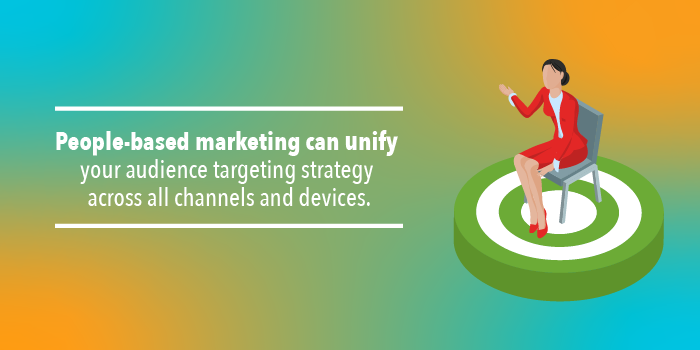
With these objectives in mind, you can find sources of second- and third-party data. Use a data exchange marketplace to find companies with comparable data for sale. You can then onboard this data to your data enrichment tools, which will automatically combine it with your first-party data to create well-rounded views of your customers. Your data enrichment solutions can send this data to other automated tools, such as your ad targeting or content suggestion platforms.
It’s crucial to remember that data can become outdated quickly. To continue taking advantage of a panoramic view of your audience, you need to update your information often. Your internal teams need to keep your CRM active and seek ways to stay in touch with customers. You’ll also need to decide how often to purchase new data to augment what you collect.
Lotame can help with our end-to-end data collaboration platform, Spherical. Contact us today!

